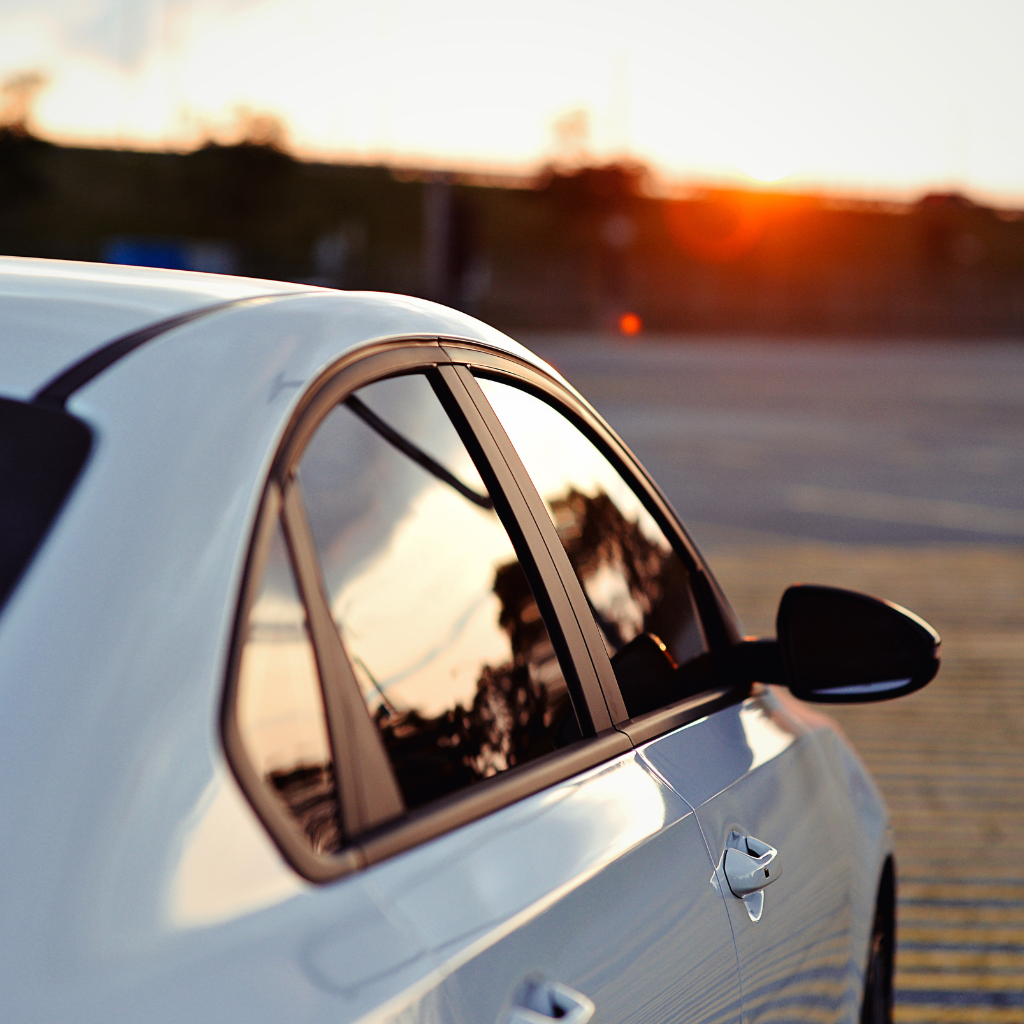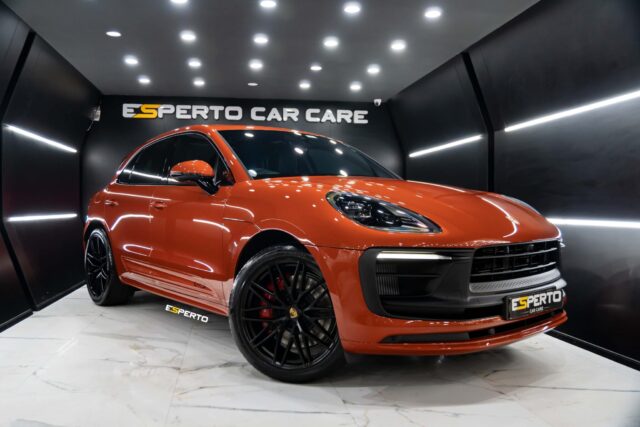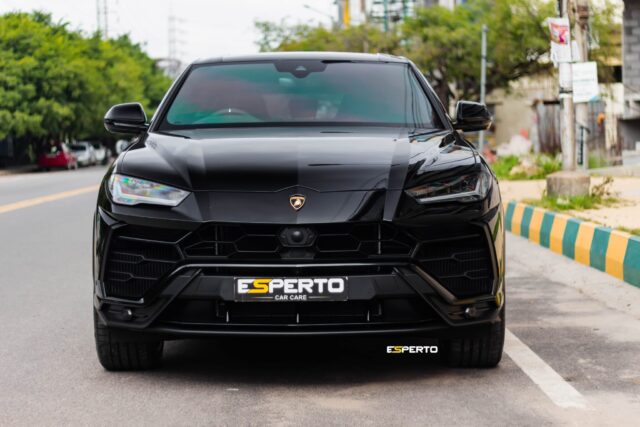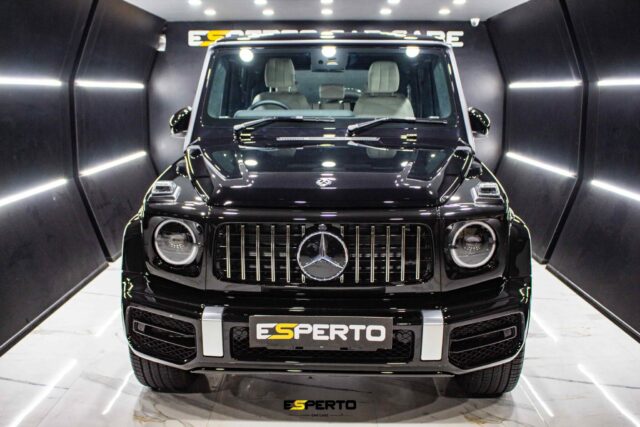Automotive window film, or high-quality films, is a layered material applied to car windows to increase privacy, manage interior temperatures, and block harmful UV rays. This film not only enhances the vehicle’s aesthetic appeal with its attractive neutral color but also protects passengers from solar infrared energy and upholstery fading, contributing to total solar energy rejection. It helps in maintaining cooler interiors, reducing the need for air conditioning and ensuring a more comfortable ride. The varied types, like ceramic and carbon, offer additional benefits that extend beyond basic sun protection. For a comprehensive approach to keeping your vehicle safe from the sun, explore more car sun protection tips that complement window tinting solutions. Discover more on how these innovations can upgrade your vehicle. Discover more on how these innovations can upgrade your vehicle.
Key Takeaways
- Car window film is a multi-layered material applied to glass for privacy, UV protection, and temperature control.
- It reduces glare and UV exposure, protecting passengers and preserving interior furnishings.
- Enhanced privacy features limit visibility inside the vehicle, offering a secure and secluded environment.
- Window films help maintain cooler vehicle interiors, Minimizes the need for air conditioning, leading to energy savings.
- Available in various shades and finishes, these films improve a vehicle’s aesthetic appeal and can increase its resale value.
What is Automotive Window Film?
Automotive window film, including dyed films’ strong performance, is a multi-layered material applied to car windows to enhance privacy and reduce heat and glare from the sun.
Various types of films, including dyed, metalized, ceramic, and carbon options, cater to different functional needs and aesthetic preferences across a wide wavelength range.
The installation of non-metalized window film offers significant benefits, such as protection against UV radiation, enhanced vehicle security, and solar infrared energy rejection, with estimated performance contributing to potential energy savings by lowering interior temperatures.
Understanding Window Film Basics
Window film, specifically designed for use on filmed glass, comprises a thin laminate that is installed on the interior or exterior of glass surfaces in cars.
This car window film provides not only enhanced aesthetics with its tinted glass appearance but also functional benefits, including fade resistance.
Window glass films are pivotal in window tint innovation and technology, offering features like total solar energy rejected and blocking up to 99% of harmful UV rays, which is beneficial for mobile devices. This is critical in safeguarding passengers from skin damage and the interior of vehicles from fading, especially during sunny days.
Moreover, rejecting more heat increased privacy window films reduce heat considerably, creating a cooler interior environment, which can lead to reduced air conditioning use and improved fuel efficiency.
Control films, incorporating nanotechnology, extend these properties by adding another layer of regulation, optimizing light entry, and maintaining comfort.
Types of Car Window Film Available
Various types of car window film, including many dark films, are available in the market, each tailored to meet the different needs and preferences of vehicle owners.
Automotive films range from basic tint for your comfort zone, which primarily focuses on enhancing the aesthetics of the car interior and satellite radio reception, to advanced RTO-approved car glass film designed for safety and regulatory compliance, depending on the window film chosen.
Premium window films reduce heat by rejecting a significant percentage of ultraviolet rejection and heat producing infrared rays, earning the skin cancer foundation’s seal safeguarding passengers and the interior from harmful exposure and excessive heat.
These films also manage the penetration of heat and light, maintaining a balanced climate inside the vehicle, often backed by a comprehensive warranty.
Benefits of Using Automotive Window Film
While car owners often seek to enhance the aesthetic appeal of their vehicles, the use of automotive window film offers a multitude of practical benefits, including rejecting heat, increased privacy, and less solar heat entering the vehicle.
Car window film, commonly referred to as window tint, notably reduces the percentage of visible light entering the vehicle, thereby allowing you to stay connected while maintaining a cooler interior and enhancing car care by preventing upholstery fade.
Sun film effectively blocks a high percentage of solar infrared energy, ensuring both rejection and protection against harmful UV rays while managing solar energy coming into the vehicle. In climates like that found in India, this affordable price help feature helps keep the car cool and reduces reliance on air conditioning, promoting fuel efficiency.
Furthermore, window tints contribute to car detailing by offering a sleek, customized look while providing added privacy and security for passengers.
How Does Ceramic Window Tint Work?
Ceramic window tint employs nano ceramic technology to enhance solar performance and heat rejection, greatly surpassing traditional films in both efficiency and durability.
This superior choice advanced material not only blocks UV rays but also regulates heat transfer, maintaining a cooler vehicle interior without compromising on visibility.
The superior performance of ceramic tint in rejecting heat contributes to its growing popularity among car owners seeking both functionality and aesthetic appeal in window films, especially since the higher this value, the better the performance.

Exploring Nano Ceramic Technology
To understand how ceramic window tint functions, one must explore the domain of nanoceramic technology, which employs layers of ceramic nanoparticles embedded within the tint material. This advanced technology enhances the protection of a vehicle by providing a high-quality coating that shields the car’s interior from direct sunlight. These films are durable and maintain a shiny surface, appealing to car owners who value both aesthetics and longevity.
| Feature | Benefit | Importance for Vehicles |
|---|---|---|
| Nano Particles | Block UV and IR rays | Protects interior |
| Durability | Resistant to wear and tear | Long-lasting performance |
| Transparency | Maintains clear visibility | Safe driving experience |
| Aesthetic | Non-reflective, clean look | Enhances vehicle appearance |
Advantages of Ceramic Tint Over Other Films
In comparing ceramic window tint to other types of films, several distinct advantages become apparent.
Ceramic tint, a type of car window film known for its ceramic properties, offers superior protection without relying on metalized layers, which can interfere with radio and GPS signals. Unlike traditional films, ceramic tint uses non-conductive ceramic particles that enhance your ride by maintaining visibility and durability.
This advanced technology guarantees that the tint does not fade over time, maintaining the improved durability, aesthetic, and function long-term. Additionally, ceramic tint provides a significant advantage in protecting the interior of vehicles from UV rays, which can degrade upholstery and cause discomfort to passengers.
This makes ceramic tint an ideal choice for those seeking effective, durable control films for their ride.
Impact of Ceramic Window Tint on Heat Rejection
Building on its numerous benefits, ceramic window tint also excels in heat rejection capabilities, contributing to optimal thermal comfort inside a car. This is vital for maintaining a comfortable interior climate in a car while protecting passengers from the sun’s harsh effects. The key to its performance lies in its composition and the way it interacts with solar energy.
- High Infrared Heat Rejection: Ceramic tint layers block significant amounts of infrared rays responsible for heat build-up, ensuring the car remains cool.
- UV Protection: It prevents up to 99% UV radiation, safeguarding both the passengers’ skin and the car’s interior paint and upholstery.
- Energy Efficiency: Reduces the need for air conditioning, hence conserving fuel and reducing emissions.
- Enhanced Durability: Unlike other tints, ceramic does not fade or deteriorate easily, maintaining its protective features and smooth, clear coat finish longer.
Enhancing Vehicle Protection and Comfort
Car window film greatly enhances vehicle safety and comfort by addressing several critical aspects.
First, for most skilled installers, it reduces glare that can impair vision while driving, thereby increasing safety.
Additionally, the film blocks up to 99% of UV rays, protecting both passengers’ skin and the car’s interior from sun damage.
It efficiently rejects infrared heat while also optimizing visible light transmission maintaining cooler vehicle interiors during hot conditions.
Glare Reduction and Driving Safety
While driving, glare from the sun or headlights can considerably impair visibility, posing a serious safety risk. Glare reduction is essential for maintaining driving safety, particularly during conditions of direct sunlight or oncoming traffic at night.
Window tinting serves as a vital tool for car owners, enhancing visibility by minimizing glare.
- Enhanced Visibility: Tinted windows reduce glare, providing a clearer view of the road.
- Maintenance of Vehicle Aesthetics: Regular polishing of window films helps achieve a high shine and a smooth finish, keeping the car’s appearance well-maintained and clean.
- Safety During Night Driving: Reduces the harsh glare from headlights and streetlights.
- Comfort: Less strain on the eyes leads to a more comfortable driving experience.
UV Protection for Skin and Interior
Window film not only enhances driving safety by reducing glare but also offers significant protection against ultraviolet (UV) radiation.
Car window film, particularly window tint, is engineered to block up to 99% of harmful UV rays, safeguarding passengers from skin damage. At the same time, absorbed energy is minimized, reducing the risk of skin cancer. This UV protection is essential for those frequently exposed to sunlight during long drives.
Additionally, the protective layer provided by car window film helps preserve the vehicle’s interior. It shields upholstery, dashboards, and other surfaces from fading, cracking, and deterioration caused by UV exposure.
The film also acts as a barrier against moisture, dust, and debris, further protecting the interior from potential scratches and maintaining the car’s aesthetic and resale value.

Infrared Heat Rejection for Cooler Interiors
In addition to UV protection, dark films are highly effective at blocking infrared (IR) rays, which considerably reduces heat buildup inside vehicles. This enhanced feature of window films makes the interiors cooler and more comfortable for passengers.
Here are the key benefits of IR heat rejection:
- Increased Comfort: Reduces the interior temperature, enhancing comfort during hot weather.
- Energy Efficiency: Lessens the need for air conditioning, thereby saving on fuel and minimizing emissions.
- Protection of Interior Surfaces: Prevents the fading and deterioration of upholstery, dashboards, and other interior components.
- Health Benefits: Decreases exposure to excessive heat, reducing the risk of heat-related health issues for all occupants.
These elements collectively enhance the quality of the ride in vehicles equipped with IR control films.
How Does Window Tint Film Improve Comfort?
Window tint film considerably reduces glare and visible light, including uv rays glare reduction, providing drivers with improved visibility and reduced eye strain during bright conditions.
By enhancing privacy, the film also discourages potential theft and increases passenger comfort by creating a more secluded environment.
Additionally, the tint helps protect the car’s interior from ultraviolet light, which can degrade upholstery and dashboards over time.
Enhancing Privacy Window Features
Beyond reducing glare and controlling light, car window film considerably enhances personal privacy, which contributes to the overall comfort and security of vehicle occupants. The application of tinted window film on a car not only controls what can be seen from outside the car but also enhances the ride by providing a sense of seclusion and protection. This added layer of privacy allows occupants to enjoy their journey without the concern of external eyes, bolstering a feeling of personal space and safety.
| Feature | Benefit | Detail |
|---|---|---|
| Tinted Darkness | Enhanced Privacy | Limits visibility inside the car |
| UV Blocking | Protection from harmful rays | Preserves skin and eye health |
| Durability | Long-lasting privacy and protection | Resists scratches and peeling |
This strategic enhancement of window features through film technology underscores its role in augmenting privacy and control within automotive care.
Impact on Car Interior and Car Care
While enhancing privacy, car window tint film also considerably improves the comfort levels inside the vehicle by moderating interior temperatures. This moderation leads to less need for air conditioning, which not only conserves energy but also reduces the interior materials’ exposure to extreme heat, hence preserving their integrity and appearance over time.
- Paint Protection: By blocking UV rays, tint films help protect the dashboard and upholstery from fading and cracking, reducing the need for frequent cosmetic maintenance.
- Reduced Interior Cleaning: Less sunlight means reduced bleaching and degradation of interior fabrics, leading to less dust and dirt accumulation.
- Simplified Maintenance: Regular wash cycles are more effective as the protective tint keeps the harsh elements at bay, making it easier to buff and maintain the car’s finish.
Is Tinted Glass Effective for Sun Protection?
Tinted glass in vehicles plays an essential role in blocking harmful ultraviolet (UV) rays, which can protect passengers from skin damage and the interior of cars from fading, thanks to its solar reflective properties.
Advanced tinting technologies not only filter out UV light but also reject significant amounts of infrared radiation, especially with darker shades, thereby reducing solar heat build-up inside the car.
Understanding the specific levels of UV and infrared rejection offered by various tint films, along with the total solar energy rejected, is vital for evaluating their effectiveness in sun protection.
Protection from Harmful UV Rays
Most car window films considerably reduce exposure to harmful ultraviolet (UV) rays, as uv light contributes, but pricing varies depending on the type, offering effective sun protection for vehicle occupants.
- UV Protection: High-quality window tints can block up to 99% of UV rays, which is essential for minimizing skin damage and reducing the risk of skin cancer.
- Car Care: By preventing UV rays from penetrating, window films help preserve the interior of the vehicle, including upholstery, dashboards, and other surfaces, from fading and cracking.
- Reduce Glare: Tinted windows greatly diminish glare from the sun and headlights, enhancing visibility and increasing safety while driving.
- Vehicle Enhancement: Beyond protection, window tints add an aesthetic appeal to the vehicle, customizing its appearance while maintaining functional benefits like sun protection and glare reduction.
Efficiency in Solar Heat Rejection
Car window films excel not only in blocking harmful UV rays but also in rejecting solar heat. Installing window film requires precision to ensure superior protection and optimal performance. By improving sun control with window film, drivers benefit from reduced glare, cooler interiors, and enhanced energy efficiency.
Functioning as a barrier against solar energy, window films reflect and absorb heat, maintaining a cooler interior and reducing reliance on air conditioning.
The result is a sleek, polished appearance that improves both comfort and efficiency. For a flawless finish, using a microfiber towel ensures no residue, leaving windows clean and clear.
Understanding UV and Infrared Rejection
While car window films are known for their aesthetic and heat control benefits, their effectiveness in blocking ultraviolet (UV) and infrared (IR) rays, along with visible light transmitted, is equally significant.
These films enhance the car’s ride by providing protection and comfort through advanced technological features:
- Infrared Rejection: High-performance tints can reject significant amounts of IR radiation, reducing heat buildup inside the car.
- Improved Comfort: By mitigating heat and UV exposure, these films maintain a cooler and more comfortable cabin environment.
- Enhanced Protection: Besides UV and IR, some films also help reduce glare, adding an extra layer of safety during the ride.
Conclusion
To summarize, automotive window films, particularly ceramic tints, greatly enhance vehicle comfort and protection, but device costs may vary. These films effectively block UV radiation, reducing interior fading and skin exposure to harmful rays. By maintaining lower cabin temperatures, they also increase comfort and reduce reliance on air conditioning, thereby improving fuel efficiency. Ultimately, the integration of window tinting technologies contributes to a safer, more comfortable, and energy-efficient driving experience, underscoring its practical value in automotive design and maintenance.






